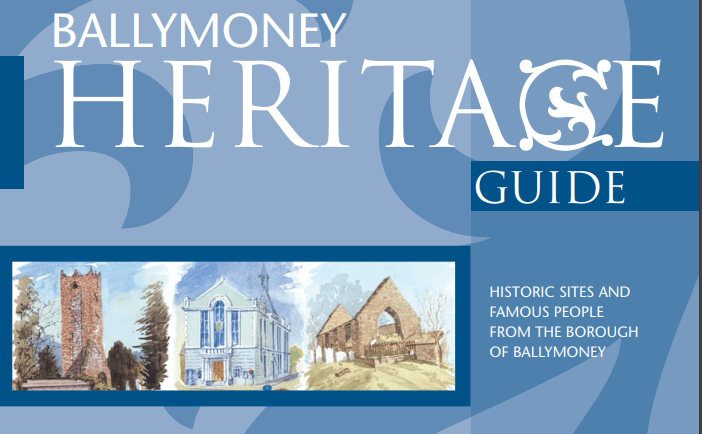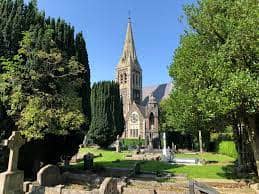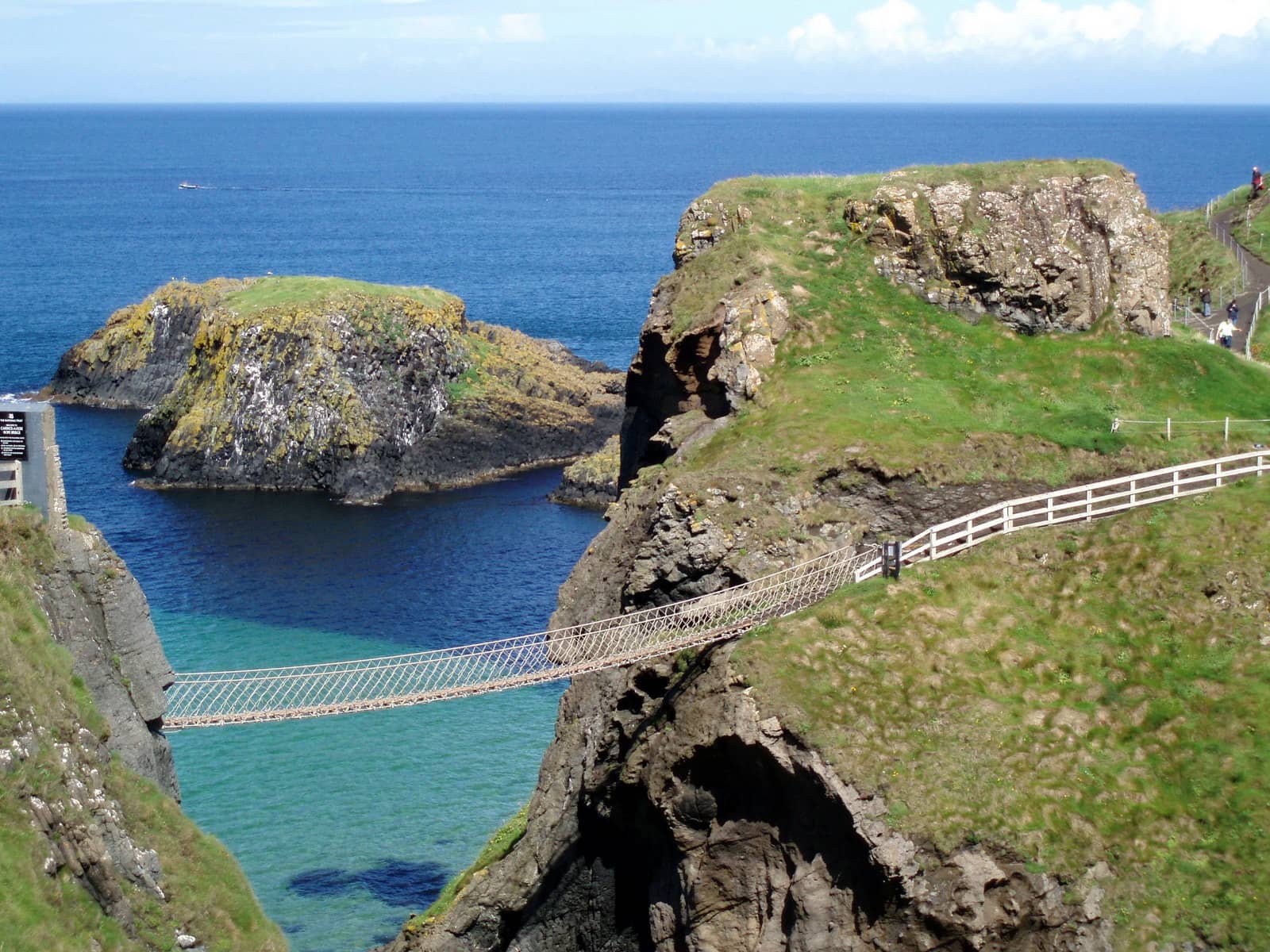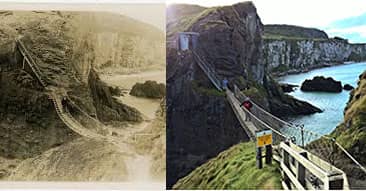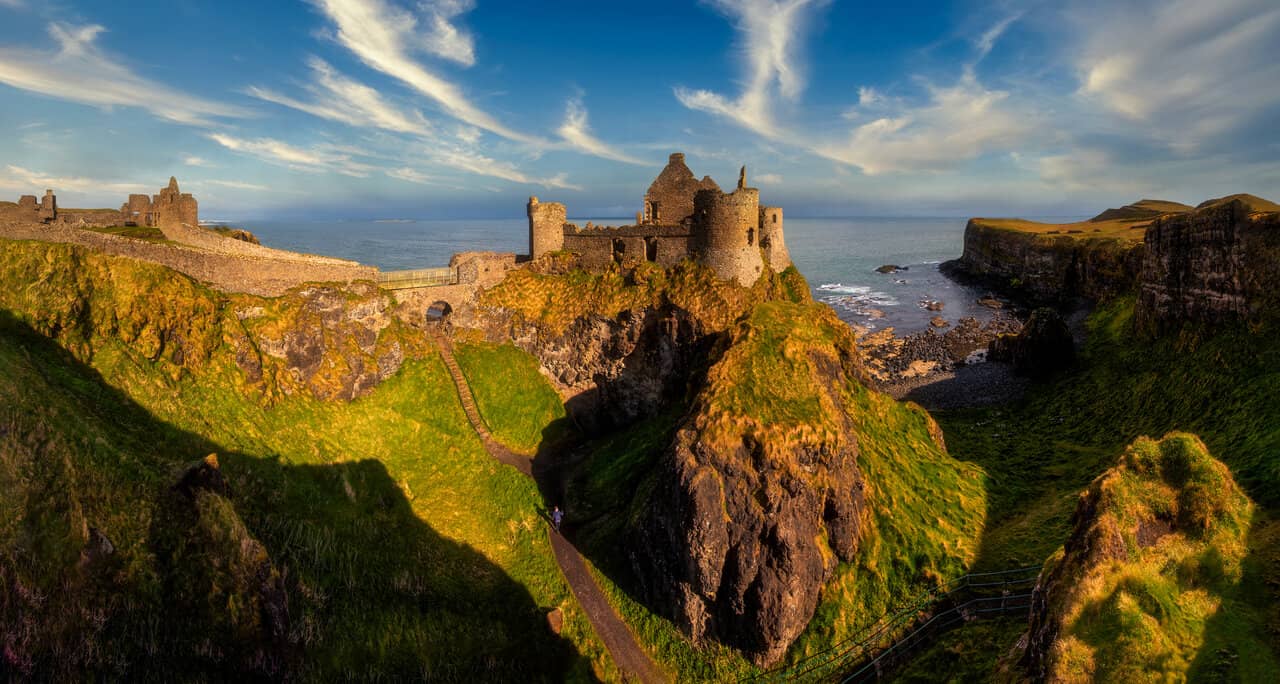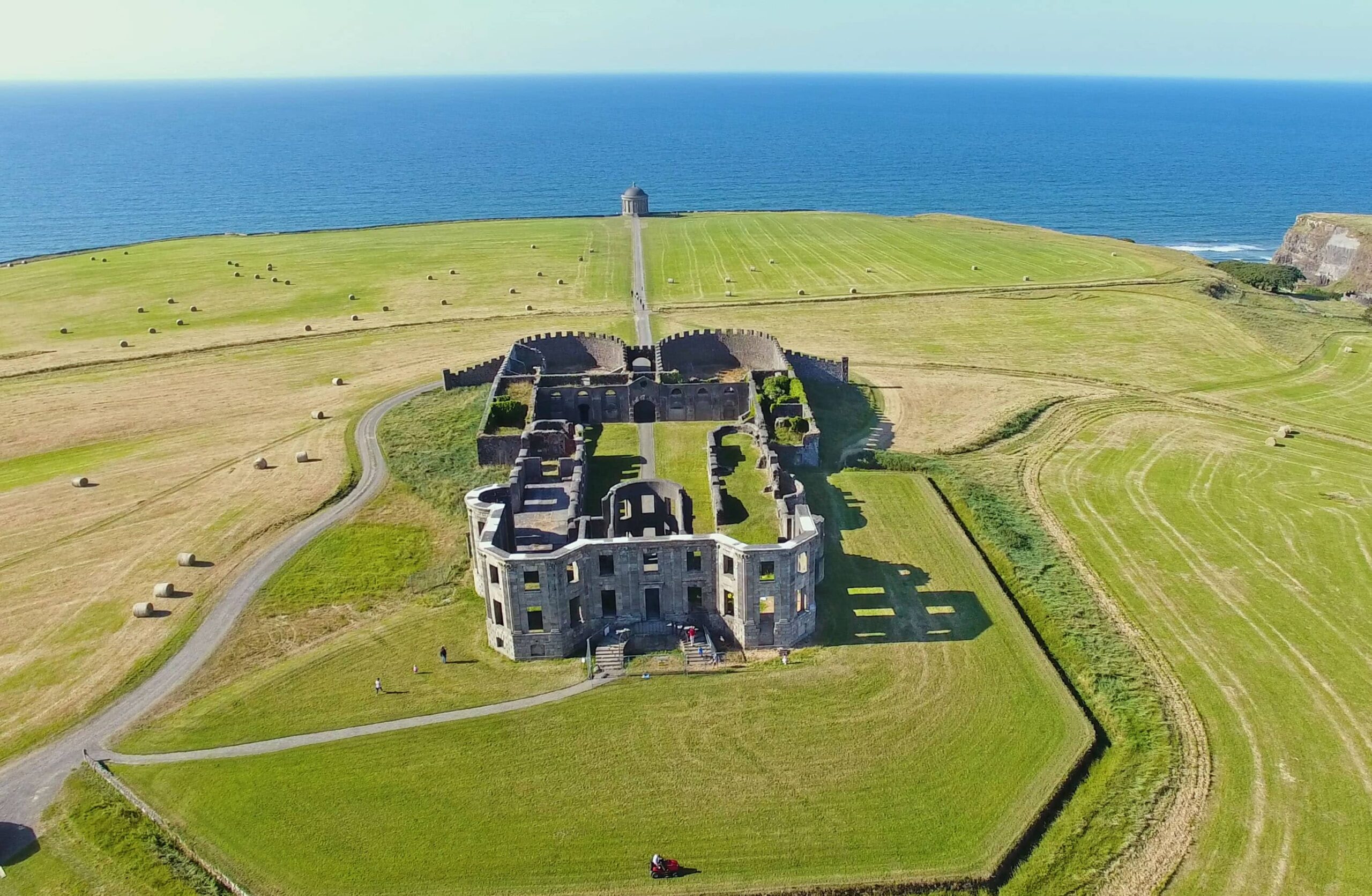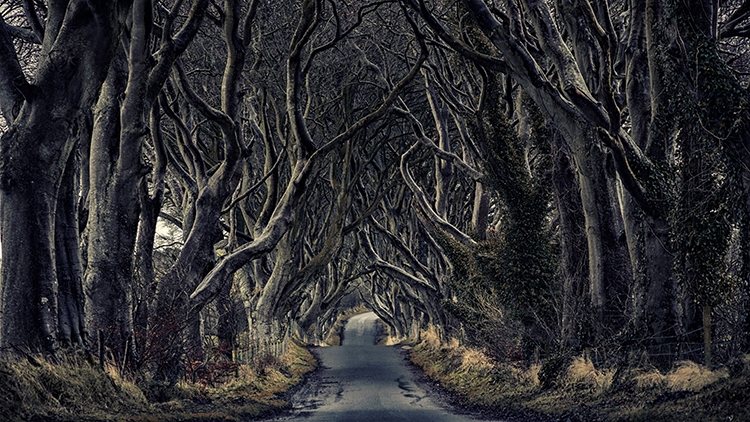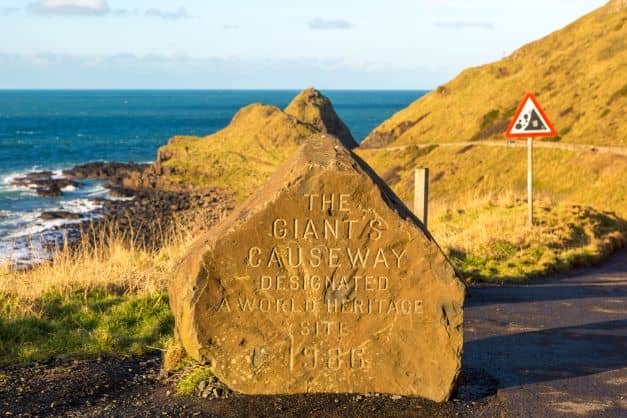Ballymoney Town Hall
Arts Centre, Museum and Tourist Information Centre – Townhead Street
The Town Hall was erected through public subscription in 1866. It was renovated and enlarged in 1934 and again in 2005. Inside are rooms which commemorate some of Ballymoney’s most celebrated historical figures, George Shiels, the playwright, K.K. McArthur, Olympic gold medallist and James Cramsie. Cramsie helped to establish the town’s first museum and subscribed over £400 to the building of the Town Hall. A stained glass window at the front of the building depicts the former Ballymoney Coat of Arms.
The Town Hall is the home of the Ballymoney Drama Festival, the oldest festival of its kind in Ireland.
ST. JAMES’S PRESBYTERIAN CHURCH
St. James’s Road
When the famous Rev Dr Henry Cooke opened this church on 20 March 1836, it was on the road to Coleraine and regarded as a magnificent, well-proportioned basalt ‘barn’ church. The road was closed a few years later, and after initial difficulties, the congregation grew and is now a powerful and prosperous one, as may be seen from the fine halls adjacent to the church.
NORTHERN BANK BUILDING
High Street
This grand building with its imposing ‘Italianate’ façade was originally a ballroom built by the 5th Earl of Antrim at his own expense. It was completed c.1760 and hosted the Earl’s grand Antrim Hunt Balls, to which local aristocrats and guests were invited. Later it was used as barracks for Government troops during the 1798 Rebellion and the Napoleonic Wars. The Northern Bank Ltd. (formerly the Belfast Bank) has used these premises since 1863.
BALLYMONEY WAR MEMORIAL
High Street
Below are the names of the Ballymoney people who died during World War II. They are taken from the War Memorial in Ballymoney and were collected from the various Memorials in churches and towns across the Borough. The names, along with those who died in WWI and the Korean conflict, were placed on the memorial in November 2000, thanks to the dedicated work of local historian Robert Thompson.
BALLYMONEY REFORMED PRESBYTERIAN CHURCH
Charlotte Street
Reformed Presbyterians, or Covenanters as often called, are the followers of those Presbyterians who signed the Covenants of 1638 and 1643. In the 18th century, there were local societies of Covenanters at Kilraughts, Dervock and Ballymoney. They secured a minister, the Rev Dr W J Stavely, in 1804 and in 1831, this church was built. It has been refurbished many times, most recently in 2003. Services here retain the old Presbyterian traditions of singing only metrical psalms, unaccompanied, led by a precentor.
OLD COURT HOUSE
Charlotte Street
The Court House is believed to be an early example of the work of Sir Charles Lanyon. He was appointed County Surveyor in 1836, shortly before work began on this building. Lanyon is famous for such spectacular architecture as Queen’s University, Belfast.
The building is impressive for its small upper-storey Vitruvian doorway. It was used as a courthouse for nearly 140 years and is now in private ownership.
CHARLOTTE STREET
This street is a fine example of Irish late Georgian terrace houses. Many houses still retain their beautiful door cases, windows and fan lights. Formerly called Pyper Row, in 1826, it was renamed in honour of Lady Charlotte Kerr, daughter of the 6th Earl of Antrim.
MASONIC HALL & TOWN CLOCK
The Diamond
Since erected by the 6th Earl of Antrim in c.1775, this building has served as a Market House, Court House, Town Hall, place of worship and school. It also housed the town’s first library (opened in 1839) and museum (opened in 1860). In 1785 the famous Methodist Rev. John Wesley preached here.
Following the 1798 Rebellion, local United Irishmen were hanged from gallows attached to the clock tower. Their bodies were buried at the base of the tower. The Campanile (bell tower) above the clock was erected by Hugh Seymour, 9th Earl of Antrim, in 1852.
THE OLD BANK HOUSE
Church Street
The Ulster Bank first opened a local branch at 33 Charlotte Street in 1836 before moving to these purpose-built and rather ornate premises in 1866. A listed building, it is now a commercial property containing private businesses.
OLD CHURCH TOWER
Church Street
The tower is the oldest surviving building in the town, with a datestone inscribed in 1637. The church was rebuilt after being burned during the 1641 Irish Rebellion and used until 1782.
Among those buried here is the town’s ghost, George Hutchinson JP, known as “Bloody Hutchinson”. Hutchinson was a local magistrate infamous for his summary justice following the United Irish Rebellion of 1798. Alexander Gamble, a United Irishman, was also buried here in 1883, 85 years after his execution.
Recent restoration work, partly funded by the Heritage Lottery Fund, has helped to preserve this important building. A leaflet guide to the Old Church Graveyard is available at the Tourist Information Centre.
ST. PATRICK’S PARISH CHURCH
Church Street
The Church of Ireland congregation has worshipped in this building since 1782. It was enlarged in 1868 when, among other additions, the tall spire was built, and more seating was provided with a south aisle. Across the road, the Old Church Tower is all that remains of the original Parish Church.
TRINITY PRESBYTERIAN CHURCH
Rodeing Foot or Roddenfoot
This congregation began as a Presbyterian Seceder Society in Pyper Row (now Charlotte Street) and moved to this site in the 1840s. The current building was opened in 1885, primarily due to the efforts of the illustrious Rev. J. B. Armour, who was minister here from 1869-1925.
The church is still known by many townspeople as “Armour’s Meeting House”.
BALLYMONEY FIRST PRESBYTERIAN CHURCH
Meeting House Street
This is the oldest place of worship in the town that is still in use. It is often known as “the Cathedral of Presbyterianism in the Route”. It was built in 1777 to replace the first Meeting House of 1690. The building was later extensively renovated in 1871, 1921 & 2004. The east window contains the coat of arms of the regiments in which members of the congregation fought during World War One.
JOEY AND MICHAEL DUNLOP MEMORIAL GARDENS
Castle Street
Joey Dunlop, born in Ballymoney in 1952, was affectionately known to motorcycle racing fans and competitors as ‘King of the Roads’.
His incredible sporting career included five Formula One World Championships; 13 wins at the North West 200, 24 wins at the Ulster Grand Prix and a world record of 26 wins at the Isle of Man Tourist Trophy. His sporting achievements were recognised by Her Majesty the Queen when he was awarded an MBE in 1986. Ten years later, he was presented with an OBE for his remarkable humanitarian work with children in Eastern Europe.
Tragically Joey lost his life whilst racing in Estonia on 2nd July 2000. It is estimated that 60,000 people worldwide came to Ballymoney to attend his funeral. In May 2001, Ballymoney Borough Council officially.
BALLYMONEY METHODIST CHURCH
Seymour Street
In 1859 the Rev William Crook opened a Methodist mission to bring practical and spiritual help to the people of Castle Street and surrounding areas. That year also saw a tremendous religious revival across Ulster, and Mr Crook decided he had enough support to merit the building of a Methodist Church, which was opened in 1861. It had a schoolroom underneath, and both church and school functioned well until the early years of the 20th century. In 1906 the school was closed, and the church was also in poor condition.
Services were transferred to the Town Hall, but an excellent renovation scheme of 1954-5 restored the building and was re-opened for worship. Further renovations took place in 1987 and 1993.
BALLYMONEY RAILWAY STATION
Seymour Street
Since 1855, passengers and freight have passed through Ballymoney Railway Station. For many years, the main line was under the control of the Belfast & Northern Counties Railway, while the Ballycastle Railway Company also ran a narrow gauge line from here to the coast from 1880-1950. The present station building was constructed in 1901 and later renovated in 1990.
KIRGAN MONUMENT
Graveyard of the Church of Our Lady & St Patrick
When Christopher Kirgan died in 1931, aged 103 years old, he was one of Ireland’s oldest men. Kirgan was born at Unshinagh, near Dunloy. He was a well-known citizen of Belfast and first initiated the erection of this gothic mausoleum 20 years before his death. The churchyard also contains the grave of the famous playwright George Shiels.
CHURCH OF OUR LADY & ST. PATRICK
Castle Street
The Church of Our Lady & St. Patrick was dedicated on 2 June 1878. The construction cost £8,870, raised through public subscription over nearly 20 years. It replaced an older building of 1833, although the first church on the site was completed in 1794. The ornate interior includes a pulpit and altars made from Caen stone. The main altar was the gift of the Royal Irish Constabulary. The renowned Franz Meyer Studio of Munich, Germany, created the stained glass windows in the apse.
